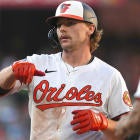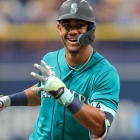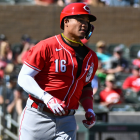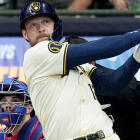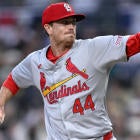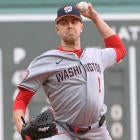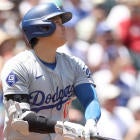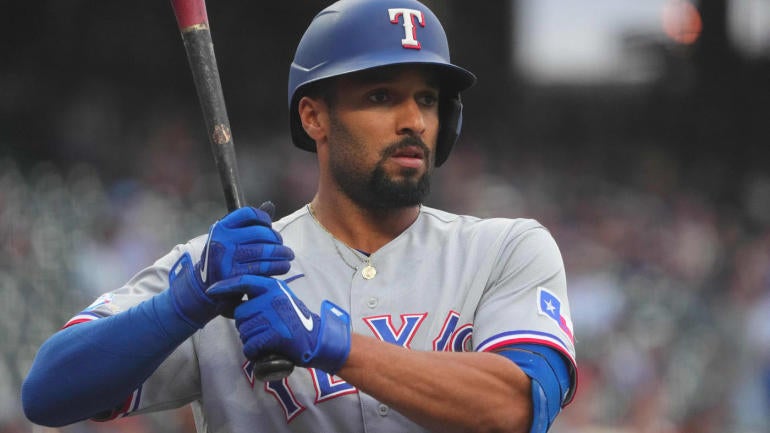
Gather round, ye children, for another mystical tale from the days of Fantasy Baseball yore. Our focus today isn't on the colossal Mark McGwire nor the spritely Rickey Henderson but on an ancient wisdom previously thought defunct: position scarcity.
Oh, you've heard of it? It's not surprising, given its early influence, that some remnants might have carried over to the modern day. But just because you're familiar doesn't mean you have the reverence for it that you could -- and I dare say should. That's true even for some of my fellow elders who've grown so accustomed to a newer style of play that they can scarcely remember a time when things were different.
But things were different, oh yes, and if my read on current trends is accurate, they will be again. Certain forces have conspired to bring position scarcity back to the forefront, and those who don't embrace this ancient wisdom are likely to suffer the consequences.
What forces, you ask? Well, the reign of the juiced ball has come to an end. It was an era defined by easy home runs. The ball carried better, and relative lightweights took advantage. New manufacturing guidelines put an end to that last year, and the result was the lowest league-wide home run total since 2015.
Here's the year-by-year breakdown of that particular statistic, with 2020 removed for obvious reasons:
| Home runs by year | ||||||||
2022 | 5,215 | |||||||
2021 | 5,944 | |||||||
2019 | 6,776 | |||||||
2018 | 5,585 | |||||||
2017 | 6,105 | |||||||
2016 | 5,610 | |||||||
2015 | 4,909 | |||||||
In case it wasn't clear from the numbers, the juiced ball era is widely thought to have begun in 2016. Just how long ago was 2016? Back then, Josh Donaldson and Miguel Cabrera were both considered first-round picks. Jose Bautista and Dee Strange-Gordon were going in Round 2, ahead of Mookie Betts. Strange indeed.
Actually, strange doesn't even begin to cover it. It might as well have been another lifetime, so again, you'd be forgiven for not remembering all the ins and outs of Fantasy Baseball before then. But one insight you shouldn't overlook from the juiced ball era is that it had an equalizing effect across positions. The home run, a form of production traditionally reserved for hulking sluggers at low-defensive-threshold positions like first base, was just as available to other positions. And this, more than anything, is what killed the concept of positions scarcity.
To illustrate, here's the percentage of 20-homer guys by position over the past two years:
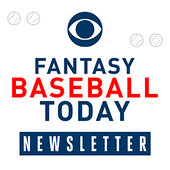
Fantasy Baseball Today Newsletter
Your Cheat Code To Fantasy Baseball
You're destined to gain an edge over your friends with advice from the award-winning FBT crew.
Thanks for signing up!
Keep an eye on your inbox.
Sorry!
There was an error processing your subscription.
| Percentage share of those with 20-plus homers | ||||||||
| | 2022 | 2021 | ||||||
C | 9.0 | 6.5 | ||||||
1B | 24.4 | 18.7 | ||||||
2B | 7.7 | 12.1 | ||||||
3B | 19.2 | 15.0 | ||||||
SS | 11.5 | 12.1 | ||||||
OF (divided by 3) | 9.4 | 11.8 | ||||||
You can see that not all positions were equally impacted by the elimination of the juiced ball. The positions that require more mobility and less bulk -- like second base, shortstop and the outfield -- all lost part of their 20-homer share while the positions that require less -- catcher, first base and third base -- all gained. And the trend lines are just as clear if you use 25 or 30 as the cutoff rather than 20.
You can probably figure out where the analysis goes from here, but let's go ahead and play it out. After all, the above data would suggest third base is considerably deeper than shortstop when even a cursory glance at the rankings would tell you the reverse is true. Home runs may have served to equalize things during the juiced ball era, but they didn't tell the whole story. And the same is true now that it's over.
Rather than size up every position by home runs, then, let's use a statistic that covers a wide range of contributions, like Head-to-Head points per game. The following depicts, by percentage, every position's share of players who averaged between 2.75 and 3.00 points per game -- its middle class, in other words. And the results offer a more complete picture:
| Percentage share of those with 2.75-3.00 PPG | ||||||||
| | 2022 | 2021 | 2019 | |||||
C | 4.8 | 3.6 | 8.1 | |||||
1B | 21.4 | 21.4 | 13.5 | |||||
2B | 14.3 | 14.3 | 10.8 | |||||
3B | 11.9 | 7.1 | 13.5 | |||||
SS | 19.0 | 14.3 | 13.5 | |||||
OF (divided by 3) | 9.5 | 13.1 | 13.5 | |||||
What you see here is a fairly even distribution across positions in 2019, which was widely considered the peak of the juiced ball era. That distribution became less even in 2021, but the gaps widened the most last year. Looking at this, it's clear the standout positions are actually first base and shortstop. Second base, while lacking at the top, is fairly robust in the middle. You can ignore catcher since it's a low-scoring position in general, but third base and especially outfield are a real problem.
OK, so I've demonstrated that position scarcity is a thing again, but what does it matter? The goal is to get the best players regardless of position, right?
Not exactly. The goal in Fantasy Baseball, as in any competition, is to overcome your opposition, and to do that, you need to build advantages into your lineup. If one position is considerably scarcer than another, doesn't it make sense to prioritize it and be on the right side of that scarcity? To do the opposite would be building in a disadvantage, which turns winning into an uphill battle.
For every hole you have in your lineup, you have to be that much better than your opposition at the deeper positions, and that's hard to do. Yeah, it's possible a late-round upside play turns into gold, but in an environment where hitting is that much more difficult, the likelihood of cashing in on a lottery ticket is that much less.
As for which position to target when, I wrote a whole series of articles about it, and you can check those out here:
Position Strategy: C | 1B | 2B | 3B | SS | OF | SP | RP
Basically, though, I'm looking to grab an outfielder in Round 1, a third baseman in Round 2, and while it's not as high of a priority, I'd like one of Jose Altuve, Marcus Semien and Ozzie Albies in Round 3. This plan is highly doable. The choices are there early, even as scarce as those positions are. Seven outfielders are gone by the end of Round 1 and five third basemen by the end of Round 2, so you can imagine how quickly things turn sour at both positions. After that, things open up a little, but you'll want to keep hitting outfield hard before it drops off a cliff around Pick 125, particularly if you play in a five-outfielder league.
You may cringe at such rigidity, relishing the freedom to branch out and do your own thing -- and hey, it's a free country. But let's be real: finding these advantages was much harder during the juiced ball era. That's why starting pitching got pushed up so much. It was shouldering all of the scarcity, an enormous chasm developing between the haves and have-nots with so many being crushed by the long ball. If you want the opposite side of the position scarcity coin, it's this:
| Number of pitchers to meet PPG thresholds | ||||||||
| | 2022 | 2021 | ||||||
18+ PPG | 8 | 5 | ||||||
17+ | 15 | 11 | ||||||
16+ | 24 | 13 | ||||||
15+ | 29 | 21 | ||||||
14+ | 38 | 30 | ||||||
13+ | 51 | 35 | ||||||
Granted, ADP shows that people have shied away from drafting starting pitchers early, in contrast to recent years, but perhaps not enough. First base and shortstop afford you the opportunity to wait a little -- and catcher, too, if you see the need to invest in it at all. But the position you can come closest to neglecting while loading up on scarcer ones is starting pitcher. This is the most jarring change from the juiced ball era.
I should qualify all this talk of position scarcity by pointing out that your mileage may vary based on format. Generally speaking, the deeper the league, the less sway it holds. If, for example, you play in a 15-team Rotisserie league with 14 hitter spots to fill, the player pool will be stretched so thin that you're sure to be weak somewhere. What's the big deal if it's third base, right? But if you play in a 12-team Head-to-Head league with only nine hitter spots to fill, it's more critical for you to optimize every spot.
So that's it, the wisdom of the ancients. Print out some tiers, denote the drop-offs and go to work. If you embrace it, you'll have a leg up on anyone still drafting like it's 2020.
That is ... unless MLB decides to change the ball again.









